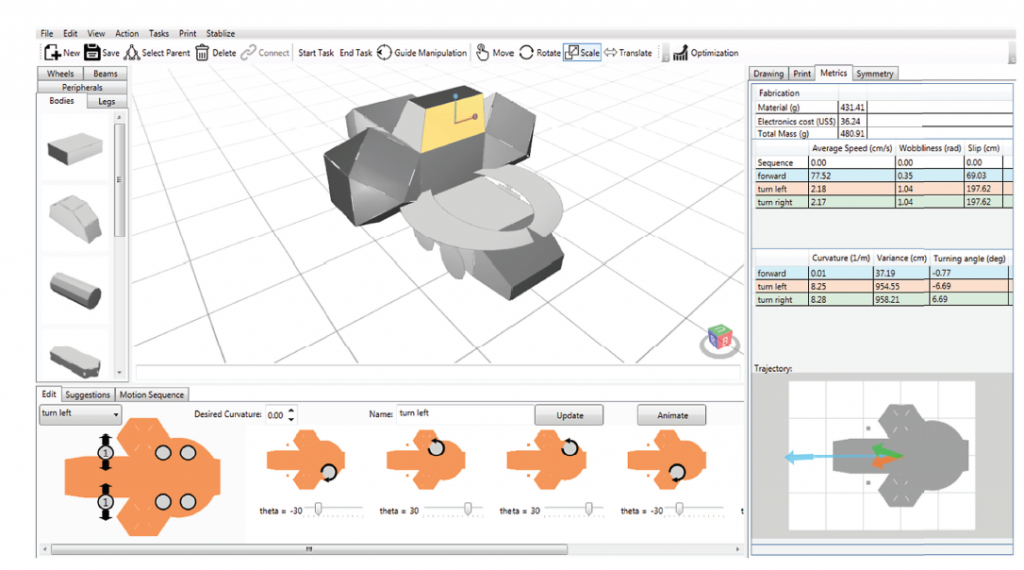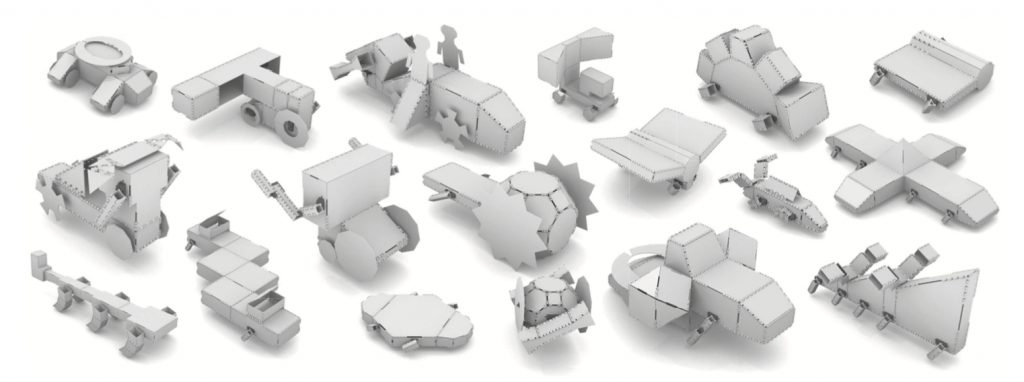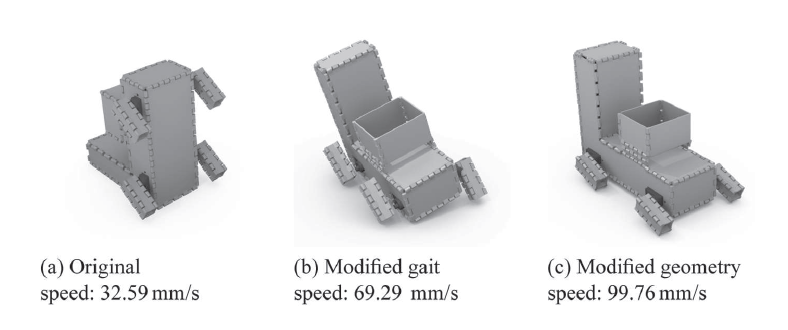The Computer Science and Artificial Intelligence Lab (CSAIL) at Massachusetts Institute of Technology (MIT) is a hub of activity for solutions to change the way people approach design and engineering,
In 3D printing, previous projects from the lab include the fabrication of a smart-sensing skin for robots, developing the “Photoshop” of 3D materials, and a voxel based platform for multimaterial design.
Fusing 3D printing with origami, the latest research published by CSAIL demonstrates a democratic method for fabricating mobile robots named Interactive Robogami.

Robogami conquers all
In Interactive Robogami, robots are made using a pre-installed library of parts: body, peripheral, leg and/or wheel.
Primary shapes in each of the four categories are formed based on the principle of creating a solid shape from a flat net.

One of the challenges posed to creating a simple, walking robot fabrication system is that gait is determined by a robot’s geometry. To remedy this, CSAIL researchers also install a walking simulation viewer into the program.
By harnessing such elementary knowledge, and adding simulation, the program conquers the complexity of robot design which has remained relatively untouched by existing computational and rapid fabrication research.
Challenge accepted: design a car and navigate an obstacle course
To prove the efficiency of the Interactive Robogami program, CSAIL researchers conducted a user study of eight students with no previous experience in robot design.
The test group was composed of eight engineering grad students: three women and five men aged 22 – 31. After 20 minutes of explanation, the users were challenged to complete two design tasks.

In the first instance, participants were given 10 minutes to create a car, and created a plethora of unique designs each using several components from the shape database.
In the second challenge, participants were tested for the ability to tune gait design by racing a robot through a predetermined obstacle course.

A paper supporting the research discussed in this article can be read open-access in The International Journal of Robotics Research.
It is co-authored by Adriana Schulz, Cynthia Sung, Andrew Spielberg, Wei Zhao, Robin Cheng, Eitan Grinspun, Daniela Rus and Wojciech Matusik, who previously gave his views on the shortage of 3D printing skills in education.
Read all about the latest additive manufacturing research projects with 3D Printing Industry on Facebook, Twitter and in our free newsletter.
Check out the latest 3D printing events here.
Featured image: CSAIL robogami design gallery. Image via The International Journal of Robotics Research


